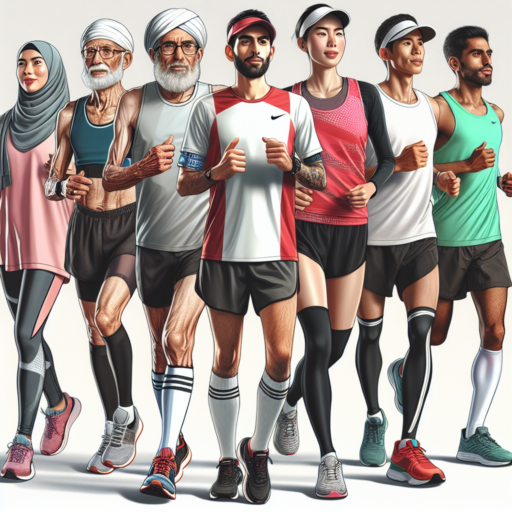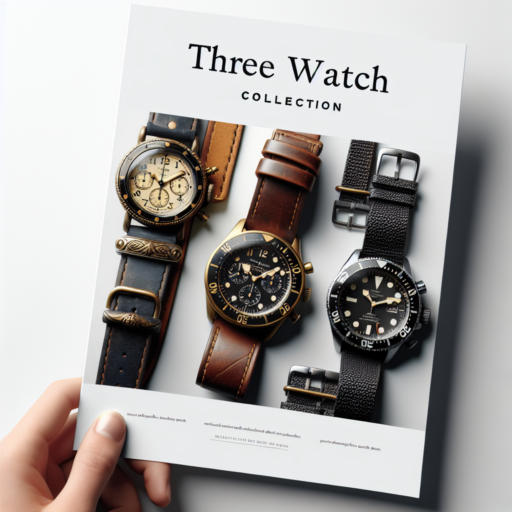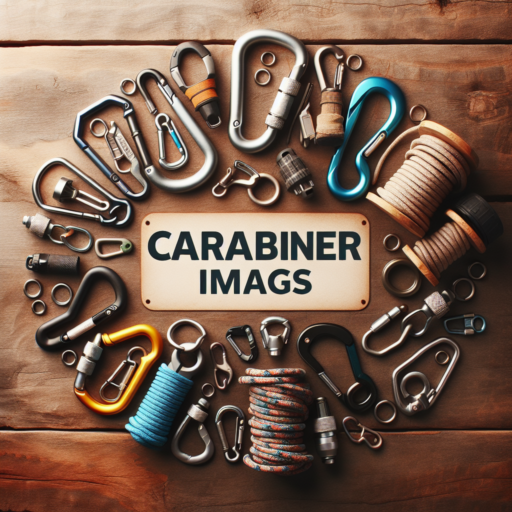Introduction to Marathoners Wear: Essential Guide for Runners
Embarking on the journey of marathon running requires not only rigorous training but also the right gear to ensure both comfort and performance. Marathoners wear is specifically designed to meet the demands of long-distance running, providing the needed support, breathability, and protection to runners. This essential guide aims at enlightening runners about the significance of selecting appropriate gear and how it plays a pivotal role in their marathon experience.
Fabric technology has incredibly advanced, offering materials that wick away moisture, thus keeping runners dry and comfortable over vast distances. Equally important is the fit of the clothing, which should offer freedom of movement without any unnecessary friction that could lead to chafing. Such considerations are paramount, especially when choosing items like running shirts, shorts, and compression wear.
Moreover, understanding the variance in seasonal gear is crucial for runners who train and compete in diverse weather conditions. From lightweight and breathable summer wear to thermal, water-resistant clothing for the colder months, equipping oneself with the proper marathon gear can significantly influence one’s running performance and overall health.
How to Choose the Right Marathon Running Shoes for Optimal Performance
Selecting the perfect pair of marathon running shoes is a crucial step for any athlete aiming to enhance their performance. The right shoes can not only improve your running efficiency but also prevent injuries, making it important to choose wisely. Factors like fit, cushioning, and the type of your foot play a significant role in determining the best running shoe for you.
Understanding Foot Type and Gait Analysis
Your foot type and gait are pivotal in selecting running shoes that offer optimal support and performance. Runners with flat feet may require shoes with enhanced stability features, while those with high arches might benefit from more cushioned options. Undergoing a professional gait analysis at a running store can provide valuable insights into your unique requirements, ensuring you get a shoe that fits your running style perfectly.
Considering Cushioning and Support
The level of cushioning and support needed varies among marathon runners. A shoe that provides adequate cushioning helps in absorbing the shock during long-distance runs, thereby reducing the risk of injuries. Similarly, the right amount of support aids in correcting any intrinsic foot motion, such as overpronation or supination, which can adversely affect running efficiency and lead to injuries over time. Balancing these elements based on your personal needs is key to finding the ideal marathon running shoes.
Ultimately, the quest for the right marathon running shoes should be guided by a thorough understanding of your own body, running technique, and the unique demands of marathon running. Taking time to carefully assess the fit, cushioning, and support offered by different models can make a significant difference in your performance and enjoyment of the sport.
The Importance of Proper Clothing for Marathoners: What to Wear
Choosing the right attire for marathon running is not just about looking good. It’s crucial for ensuring performance, comfort, and injury prevention. The quest for the perfect marathon outfit involves understanding both the fabric and fit that will best support the runner’s needs. Whether you’re a seasoned marathoner or a newcomer to the sport, understanding the importance of proper clothing can make a significant difference in your running experience.
One of the key factors in selecting marathon clothing is the material. Technical fabrics that wick away sweat and keep you dry are essential. Unlike cotton, which tends to absorb moisture and can cause chafing, materials like polyester, nylon, or bamboo offer breathability and moisture management. Furthermore, wearing clothes designed specifically for the rigors of a marathon can help prevent blisters and rashes, which are commonly associated with long-distance running.
Another aspect to consider is the fit of your marathon apparel. Clothing that is too tight can restrict movement and potentially alter your natural running gait, while too loose-fitting gear might lead to unnecessary drag and energy expenditure. Ideally, marathoners should opt for apparel that is snug but not constricting, allowing for optimal air circulation and freedom of movement. Special attention should also be given to weather conditions, as layering can be key for cold weather marathons, and lighter, more breathable fabrics are recommended for warmer climates.
Enhancing Your Marathon Experience with High-Tech Wearables
In the modern era where technology melds with physical prowess, high-tech wearables have become pivotal in transforming the marathon journey from ordinary to extraordinary. These devices offer not just a way to track your performance but also enhance your running experience, bringing to light the hidden potentials within every runner. From advanced fitness trackers to smartwatches capable of monitoring your heart rate and oxygen levels, the integration of wearables has certainly set a new benchmark in athletic performance.
Moreover, the advent of GPS-enabled wearables has revolutionized the way marathoners train and compete. The precise tracking of distance and pace allows for a tailored training schedule, enabling runners to maximize their efficiency with minimal risk of injury. These devices often come with specialized apps that provide detailed insights into your performance metrics, helping you to identify areas for improvement and pushing the boundaries of what you thought was possible.
Perhaps one of the most significant impacts of high-tech wearables in marathon running is the ability to stay connected without disrupting your run. Features such as on-the-go payment, music streaming, and instant notifications enable a seamless experience, allowing the runner to focus on the race ahead. It’s this harmony of convenience and functionality that enhances the marathon experience, making every step, every mile, more enjoyable and fruitful.
Layering Tips for Marathon Runners: Preparing for Any Weather
Preparing for a marathon requires not just rigorous training but also smart planning, especially when it comes to dressing for any weather condition. Layering is a key concept that marathon runners should master to ensure they remain comfortable, dry, and at an optimal temperature throughout the race. Starting with a moisture-wicking base layer that keeps sweat away from your skin is crucial. This helps maintain your body’s natural temperature regulation and prevents you from feeling damp and chilled.
Adding a thermal mid-layer is essential for colder weather. This layer should provide insulation and be made of a breathable material to allow excess heat and moisture to escape. It’s important to choose a mid-layer that is easy to remove and tie around the waist if you become too warm during the race. For marathon runners, garments designed with runners’ specific needs in mind, such as those with thumbholes or half-zip fronts, offer both convenience and functionality.
Lastly, your outer layer should act as a shield against the elements, protecting you from wind, rain, or even snow. This layer should be lightweight and water-resistant, if not waterproof, yet breathable to prevent overheating. A good outer layer will have vents or be made of fabrics that support good airflow. Reflective detailing is also a plus for visibility during early morning runs or in foggy conditions. Some outer layers are designed to be easily packable, so they can be stowed away if the weather clears up.
Marathon Must-Haves: Accessories Every Runner Should Consider
When preparing for a marathon, it’s not just your hours of training that matter, but also the gear you choose. The right accessories can not only enhance your performance but also make the experience more enjoyable. From keeping you hydrated to ensuring your comfort over long distances, the accessory choices are crucial.
Hydration Solutions for the Long Run
Staying hydrated is paramount for marathon runners. Lightweight hydration packs or belts that don’t bounce or chafe during long runs are perfect for marathoners. Options vary from compact water bottles designed specifically for runners to vests equipped with hydration bladders. Remember, selecting a hydration accessory that matches your running style and marathon conditions is key to maintaining endurance from start to finish.
Protective Gear: Shielding Against the Elements
Whether you’re facing the blazing sun or unpredictable weather, protective gear is a non-negotiable. Sunscreen, sunglasses, and running caps are essentials to shield you from harmful UV rays, while lightweight, breathable, and water-resistant jackets are indispensable for coping with rain or wind. Always look for products designed with runners in mind, focusing on breathability and mobility without sacrificing protection.
The right marathon accessories can substantially impact your training and race day performance. By focusing on hydration, comfort, and protection, runners can ensure they are well-prepared for any challenges a marathon might present. While these are just a few essentials, they are pivotal in supporting both your preparation and the actual marathon experience.
Hydration Solutions for Long-Distance Running: Gear That Keeps You Going
In the realm of long-distance running, maintaining optimal hydration is not just a recommendation; it’s a crucial aspect of your performance and health. The quest for the perfect hydration solutions has given rise to a variety of innovative gear designed to meet the unique needs of endurance athletes. In this context, understanding the various options available can help runners choose the gear that best fits their hydration strategy and personal preferences.
Selecting the Right Hydration Gear
When it comes to choosing hydration gear, it’s essential to consider your specific running conditions, distance, and personal comfort. Options range from handheld water bottles, which are light and easily accessible, to hydration vests that distribute weight more evenly and can carry larger quantities of water or sports drinks, as well as essential items like nutrition and your phone. For those looking for minimalistic gear, hydration belts offer a great middle ground, providing the capacity for one or two small bottles without the bulkiness of a vest.
Hydration Packs and Vests: An In-depth Look
Hydration packs and vests stand out as a favorite among long-distance runners due to their convenience and efficiency. These innovative pieces of gear are designed with multiple pockets and compartments, allowing runners to carry water bladders that can hold up to 2 liters or more. The ease of access to water through a hose that extends to your mouth means you can hydrate on the go without breaking stride. Moreover, they are engineered to fit snugly to the body, reducing bounce and ensuring comfort over many miles. With options that include features like adjustable straps, breathable materials, and quick-access pockets for nutrition and essentials, it’s easy to see why they are a go-to choice for serious athletes.
Choosing the right hydration solution is a personal journey and varies widely among long-distance runners. Whether you prefer the simplicity of a handheld bottle, the balance of a hydration belt, or the capacity and features of a hydration vest, the key is finding a solution that keeps you efficiently hydrated without impeding your performance. Remember, the best gear is the one that you will use consistently and feels right for you, supporting your running adventures and helping you to push your limits.
No se han encontrado productos.
Avoiding Chafing and Blisters: Selecting the Right Marathon Wear
When training for a marathon, every runner knows the importance of selecting the right gear to avoid chafing and blisters. These common issues can turn a long-distance run from a triumphant challenge into a painful ordeal. Accordingly, it is crucial to choose marathon wear that not only fits well but is also designed with specific features to combat these problems.
Materials play a vital role in preventing chafing and blisters. Look for performance fabrics that wick moisture away from the skin, as dampness can increase friction and irritation. High-quality synthetic fabrics such as polyester and nylon are ideal, as they are engineered to reduce moisture and maintain a comfortable environment for your skin. Additionally, apparel with seamless designs or flat-seam construction can significantly reduce the potential for irritation caused by rubbing against the skin.
Fit is another critical factor when selecting marathon wear. Clothes that are too tight can restrict movement and amplify friction, leading to chafing, while loose-fitting garments can bunch up and cause blisters. Opt for running attire that offers a snug yet comfortable fit, allowing for full range of motion without excess fabric. Furthermore, special attention should be given to socks, as they are your first line of defense against blisters on your feet. Investing in socks designed specifically for running, which often feature padded areas and moisture-wicking materials, can provide additional protection and comfort over long distances.
Latest Trends in Marathon Apparel: What’s New for Runners in 2023
As runners eagerly anticipate hitting the pavement in 2023, the latest trends in marathon apparel are showcasing innovations designed to enhance comfort, performance, and sustainability. This year, the emphasis is heavily on the integration of high-tech materials and environmentally friendly fabrics that do not compromise on style or functionality. Runners can look forward to apparel that supports their goals while also aligning with their values.
Eco-Friendly Materials Taking the Lead
One of the most notable trends in 2023 is the shift towards eco-friendly materials. Brands are increasingly utilizing recycled plastics, organic cotton, and other sustainable materials to create marathon apparel. This shift is not only better for the planet but these materials have been engineered to provide superior breathability and moisture-wicking properties, ensuring that runners stay comfortable and dry, mile after mile.
Smart Textiles Elevate Performance
In 2023, the spotlight is also on smart textiles, which are revolutionizing how marathon apparel aids athletes. These textiles are embedded with sensors that monitor heart rate, body temperature, and even form, allowing runners to optimize their performance in real-time. This marriage of technology and apparel signifies a giant leap forward in ensuring that marathon runners can achieve their best, equipped with data-driven insights.
Frequently Asked Questions About Marathon Gear: Expert Advice for Runners
Choosing the right marathon gear can significantly impact your performance and overall experience on race day. Runners often have many questions regarding the selection of appropriate gear that ranges from what to wear to how to select the right accessories. In this guide, we cover some of the most frequently asked questions (FAQs) to help you make informed decisions about your marathon gear.
What Are the Essential Pieces of Gear for Marathon Runners?
While personal preferences play a crucial role, certain pieces of marathon gear are universally recognized as essential. A well-fitted pair of running shoes is paramount, followed by moisture-wicking clothing to keep you dry and comfortable. Don’t overlook the importance of a high-quality pair of socks, which can prevent blisters, and a running belt or armbands for carrying personal items and nutrition. Reflective gear and a comfortable, adjustable hat or visor for weather protection are also highly recommended.
How Should I Choose the Right Running Shoes?
Selecting the right pair of running shoes is critical for marathon success. Start by getting your feet professionally measured, as your foot size can change over time. Consider the arch and width of your foot, and choose shoes designed for your foot type and gait. It’s also important to consider the distance you’ll be running and select a shoe with appropriate cushioning and support. Remember, the best shoe for you is the one that feels comfortable from the start and continues to provide support throughout your training and the marathon itself.
Is Specialized Gear Required for Different Weather Conditions?
Yes, adapting your gear to the weather conditions is essential for both comfort and performance. For hot weather marathons, opt for light-colored, breathable fabrics that offer UV protection. During colder climates, layering is key; start with a moisture-wicking base layer, add an insulating layer, and top with a windproof and waterproof outer layer. Don’t forget accessories like gloves and thermal hats for cold weather, and always apply sunscreen for sunny days, regardless of the temperature.



